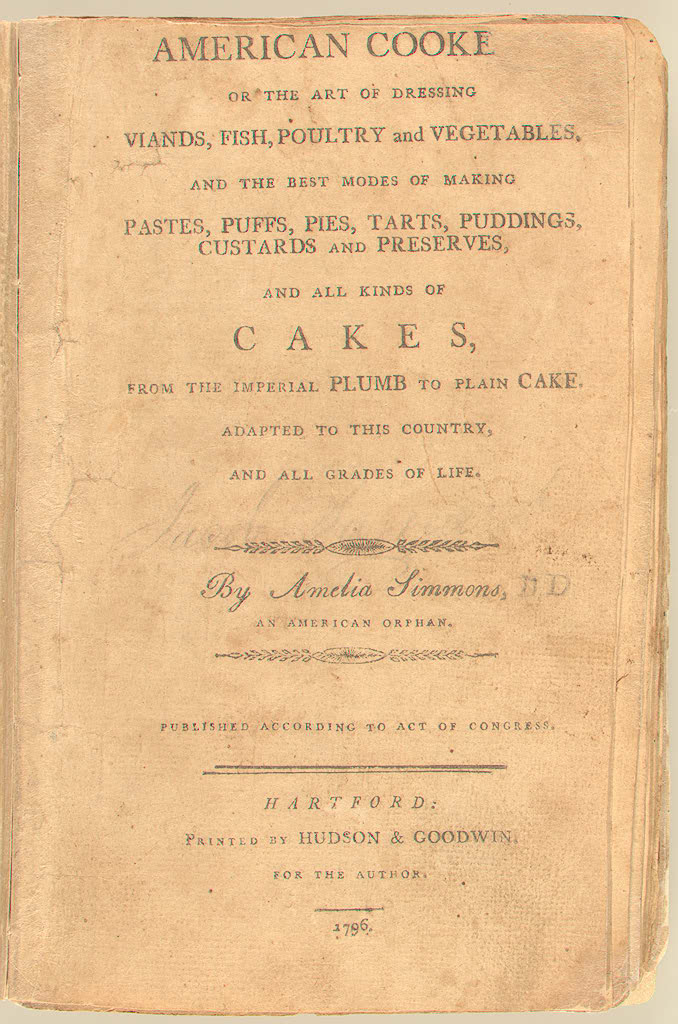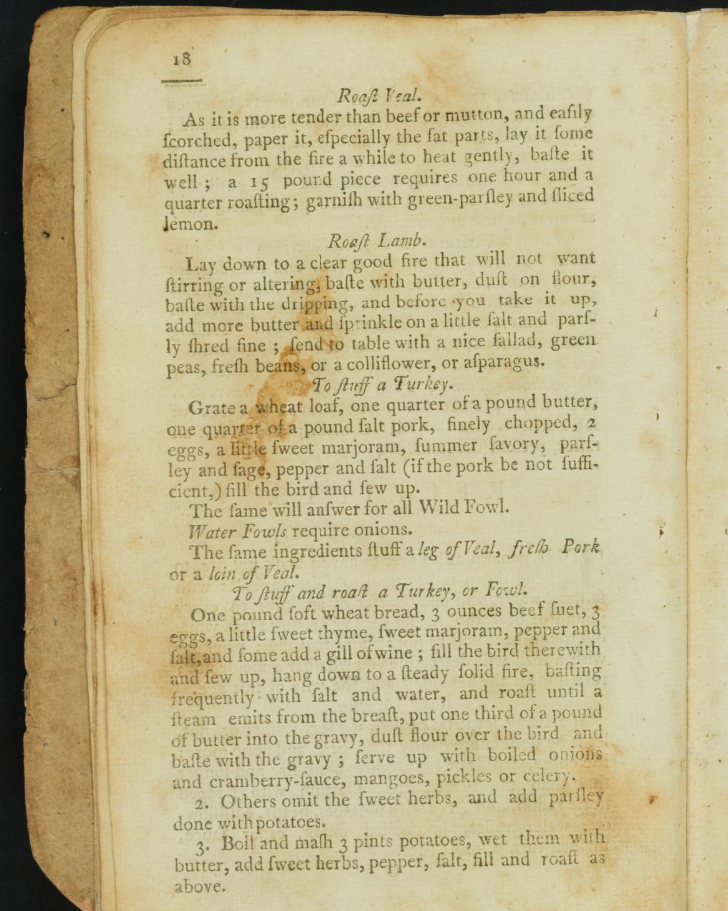Here’s a little turkey cooking advice by Amelia Simmons, from her 1796 cookbook succinctly titled:
American Cookery, or The Art Of Dressing Viands, Fish, Poultry And Vegetables, and The Best Modes Of Making Pastes, Puffs, Pies, Tarts, Puddings, Custards and Preserves, and All Kinds Of Cakes, From The Imperial Plumb To Plain Cake. Adapted To This Country, and All Grades Of Life.
Simmons book was the first cookbook written by an American and published in the United States.
If you’d like to own a reprinted copy of the first American cookbook, Amazon sells one here.


Below is a transcribed text from the 1796 edition, shown above, and found in the Library of Congress here.
“Hen Turkey, is higher and richer flavor’d, easier fattened and plumper—they are no odds in market.
To stuff and roast a Turkey, or Fowl
- One pound soft wheat bread, 3 ounces beef suet, 3 eggs, a little sweet thyme, sweet marjoram, pepper and salt, and some add a gill of wine; fill the bird therewith and sew up, hang down to a steady solid fire, basting frequently with salt and water, and roast until a steam emits from the breast, put one third of a pound of butter into the gravy, dust flour over the bird and baste with the gravy; serve up with boiled onions and cramberry-sauce, mangoes, pickles or celery.
- Others omit the sweet herbs, and add parsley done with potatoes.
- Boil and mash 3 pints potatoes, wet them with butter, add sweet herbs, pepper, salt, fill and roast as above.
Potatoes
All potatoes should be dug before the rainy seasons in the fall, well dryed in the sun, kept from frost and dampness during the winter, in the spring removed from the cellar to a dry loft, and spread thin, and frequently stirred and dryed, or they will grow and be thereby injured for cookery.
Garlicks, tho’ used by the French, are better adapted to the uses of medicine than cookery.”
Thanks for reading.
Be sure to visit me on Facebook, Instagram or Pinterest, or on my website at keithdotson.com.
~ Keith
Notice: This blog post contains an Amazon Affiliate link. I may earn a small commission on qualifying purchases.
